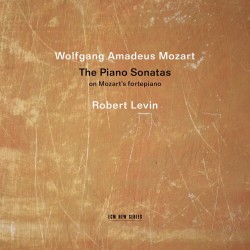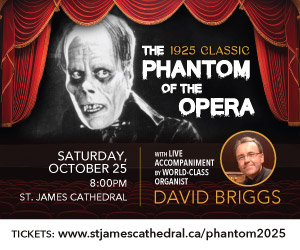 Mozart – The Piano Sonatas
Mozart – The Piano Sonatas
Robert Levin
ECM New Series 2710-16 (ecmrecords.com)
Although it is not uncommon to find one or two of Mozart’s piano sonatas on recital programs, it is much less common – and much more Herculean a task – to present all 18 of his sonatas in one marathon session. Fortepianist Robert Levin embraces this challenge wholeheartedly with this remarkable six-and-a-half-hour release, featuring not only all of Mozart’s fully finished piano sonatas, but also a number of miscellaneous sonata-form movements, all performed on Mozart’s fortepiano.
This reference to “Mozart’s fortepiano” requires some clarification, as his first six sonatas were most likely written not for the fortepiano, but rather the harpsichord or clavichord. Invented in 1698 by the Italian instrument maker Bartolomeo Cristofori, Mozart first encountered the fortepiano as developed by Johann Andreas Stein in 1777 and, after giving this instrument a rave review, obtained his own from the manufacturer Anton Gabriel Walter. Haydn also owned a Walter fortepiano, Beethoven expressed a desire to own one, and it is on this instrument that Levin performs this Mozartian marathon.
The main difference between the historical fortepiano and the modern grand piano is that the hammers are much smaller, lighter and thinly covered with leather, rather than felt. The lighter strings and gentler hammer action produce a sound that is considerably different than modern pianos, with more overtones and a more rapid decay. Where modern pianos can be murky and weighty – particularly in the lower register, fortepianos are lighter and more agile, with great clarity across the keyboard’s entire compass.
The fortepiano continued to develop after Mozart’s death, growing larger and more robust, and eventually evolving into the modern piano as we now know it. While we often think of the Romantic composers performing on Bösendorfers and Steinways, Chopin, Mendelssohn, Schumann and Liszt all performed on fortepianos that, although considerably different from the instrument of a century earlier, were nonetheless still quite closely related to their classical-era ancestors.
For those accustomed to hearing Mozart’s piano sonatas performed on a modern piano, this recording will serve as a revelation. The idiomatic nature of Mozart’s writing is immediately apparent as the clarity, subtle dynamic range (as compared to modern pianos), and unique lyricism of the fortepiano result in a profound paradigm shift in the listener. Passages that once seemed unclear or required slower-than-expected tempi to avoid muddying the acoustic waters are here presented with utmost transparency, as the instrument and written score combine with great effect.
Consider, for example, the ubiquitous Sonata facile (No.16, K545), one of the most frequently performed and frequently heard of all Mozart’s piano sonatas. Here one can clearly discern that the rapid decay of the fortepiano determines a great deal of Levin’s interpretive decisions, for each note of this well-known melody now has a definite period of sustain and, to maintain the lyrical line, a “minimum velocity” is required by the instrument itself.
This recording is highly recommended to all who enjoy playing and listening to Mozart’s music, for not only does it present an ingenious composer’s works performed by an expert interpreter, it also provides a window into what Mozart himself might have heard as he was crafting these pieces at his fortepiano almost three centuries ago.



